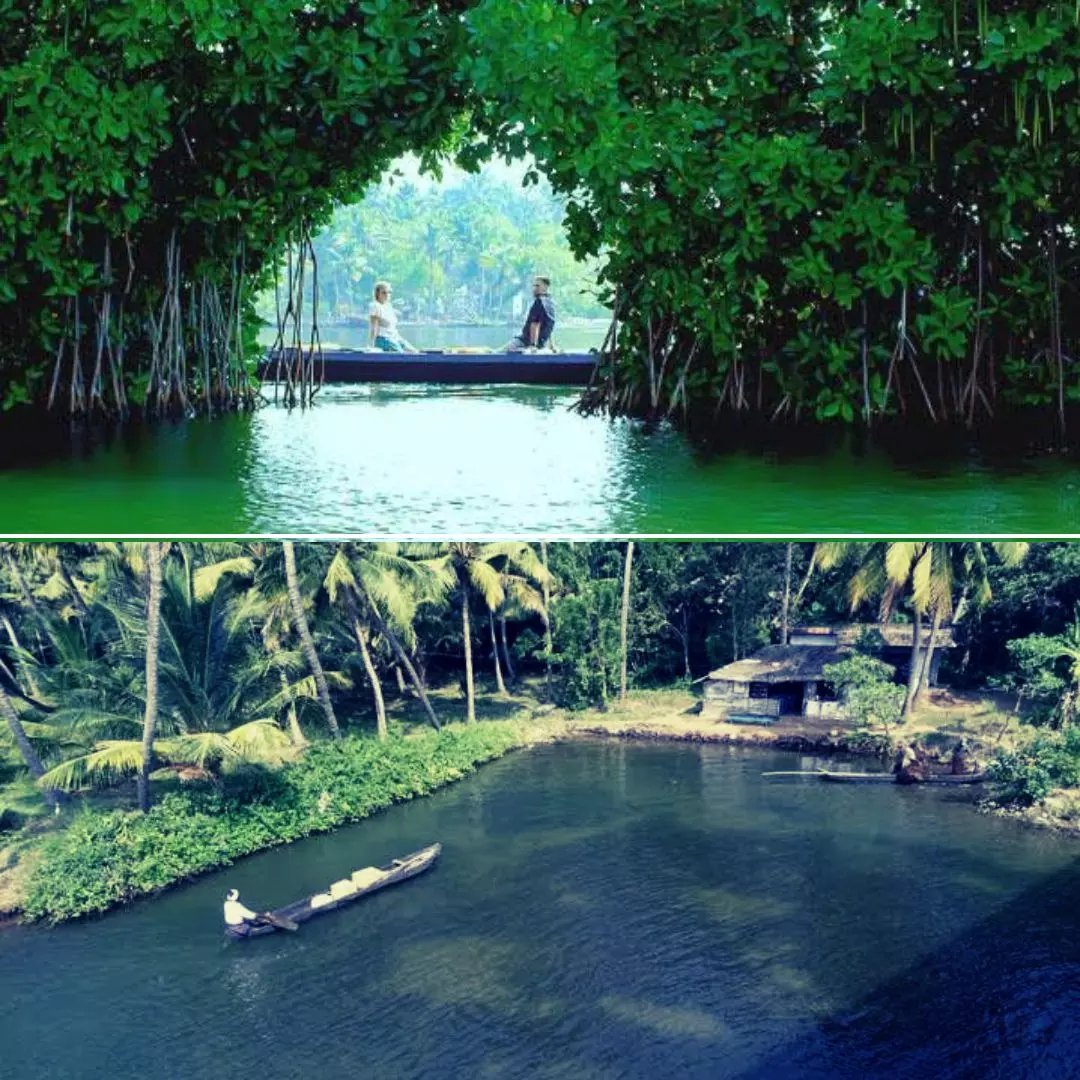
Image Credits: Kerala Tourism
Munroe Thuruth: Once The Tourist Hotspot Is Now A Sinking Island For Residents, All You Need To Know
Writer: Laxmi Mohan Kumar
She is an aspiring journalist in the process of learning and unlearning many things. Always up for discussions on everything from popular culture to politics.
Kerala, 17 Dec 2022 9:38 AM GMT
Editor : Shiva Chaudhary |
A post-graduate in Journalism and Mass Communication with relevant skills, specialising in content editing & writing. I believe in the precise dissemination of information based on facts to the public.
Creatives : Laxmi Mohan Kumar
She is an aspiring journalist in the process of learning and unlearning many things. Always up for discussions on everything from popular culture to politics.
A resident who has watched their home and livelihood slowly sink along with the rising tides in Munroe Island says, "Water is like an unwelcome guest in our homes". She adds children have to wade past the filthy water to reach their schools.
Munroe Thuruth is a cluster of islets located at the confluence of Ashtamudi Lake and Kallada River in Kollam. It has been one of the most popular tourist destinations of the state and attracts tourists from around the world with its mangrove patches and coconut lagoons. However, on the other side of the island reside a bunch of villagers who continue to live under the threat of being displaced.
The island's low-lying areas and tourist projects over the years led to several hundreds of natives leaving behind the island life for safer living conditions. The situation was aggravated after the unusually high tides as a courtesy post-Indian Ocean tsunami in 2004. Since then, the residents have been brought to the brink with a huge question mark upon their survival.
"An Unwelcome Guest"
According to unofficial figures cited by NDTV, the population of the island has staggered to about 8,000 from 13,000 in recent years. Hundreds of families left behind the island life due to the threat of being left homeless in the face of the high tides and the corresponding seepage of saline water into the houses. Waterlogging and connectivity have been issues that have been brought up time and again by the residents of the island, named in honour of the erstwhile British resident Colonel Munroe.
Today many houses on the island remain abandoned, filled with dirt, partially submerged, or in entirely deteriorating conditions. It has become a common sight in the highly affected regions to see people carry out their daily chores in ankle-high water levels. Talking about this daily routine, a resident named Susheela said, "Water is like an unwelcome guest in our homes." She goes on to say that water enters their houses almost every other day and that the children of the island have to wade past the filthy water to reach their schools.
Fighting For Survival
A sought-after cruise tourism destination, Thuruth's low-lying regions now stand at the risk of being submerged during high tides. Over the years, multiple studies have been carried out to understand the exact reason behind the issues faced by the island, but experts continue to be divided in their opinion.
One-half of the studies attribute the unusually high tides in the region to global warming and climate change, while many others view it as a result of a tectonic shift following the 2004 tsunami. Meanwhile, the natives attribute the changes on the island to factors such as the construction of the Kallada dam and the vibration generated by trains passing through the island. With the ongoing debates, the residents' lives and livelihoods continue to be placed at stake.
There have been incidents reported where people could not be taken to hospitals on time due to the island's transportation limitations and connectivity issues. The country boats, which tourists enjoy as an exclusive experience, are the only mode of transport for the residents to ferry to schools, hospitals, and other services. Jayachandran, a block panchayat member, stated that about 2,000 families continue to live and fight these adversities as the island is the only place left for them.
Seeking Solutions In The Sea Of Problems
Former Panchayat President of the Thuruth, Binu Karunakaran, stated that the island had witnessed one of the gravest situations in the last two years as the tidal situation took a toll on the residents continuously for months. The situation was documented to have worsened in three wards of Pattam Thuruth, Kidapram North and South, where many local residents had to leave due to the severity of the conditions.
In other regions, people were forced to look for options, with their only livelihood of farming slowly disappearing from the island. Due to the high salinity of these waters, the lush lagoons and coconut trees now stand lifeless, with their roots having succumbed to decaying in the salt water. Binu himself had planted over 1,500 plantains, chembu (Taro), chena (Yam), but now nothing but an overtly saline land unfit for agriculture is left behind. Coconut, which was among the main crops of the region, has also depleted drastically in numbers.
Kerala Finance Minister K N Balagopal, who had previously proposed several interventions to support the islanders, was of the opinion that it is difficult to come up with a solution when the underlying problem remains unknown. He stated that the issues of the Thuruth can not be taken up in isolation when it falls as a part of the worldwide phenomenon of global warming and climate change, as many experts suggested.
On the lines of climate change, CEO of New Delhi-based iFOREST and climate expert Chandra Bhushan too conveyed the idea that the rise in sea levels due to global warming could be a potential reason for the unusually high tide and consequent submergence of the Thuruth. Explaining this phenomenon further, he conveyed, "Sea level rise can certainly be attributed to the increase in high tides. The rise in the Indian Ocean is one of the highest in the world. So, naturally, when the water level is high, the tide level is also higher," he said.
The possible solution that authorities are looking into is to help the islanders adapt to the changing circumstances and support them with sustainable solutions to revive their livelihood. Since the region continues to bring in tourists, the islanders can be brought into region-friendly tourism opportunities to develop a steady income. As for the submergence of the low-lying regions, they continue to explore options such as "amphibian houses" and "lightweight" constructions that can withstand the conditions.
 All section
All section














